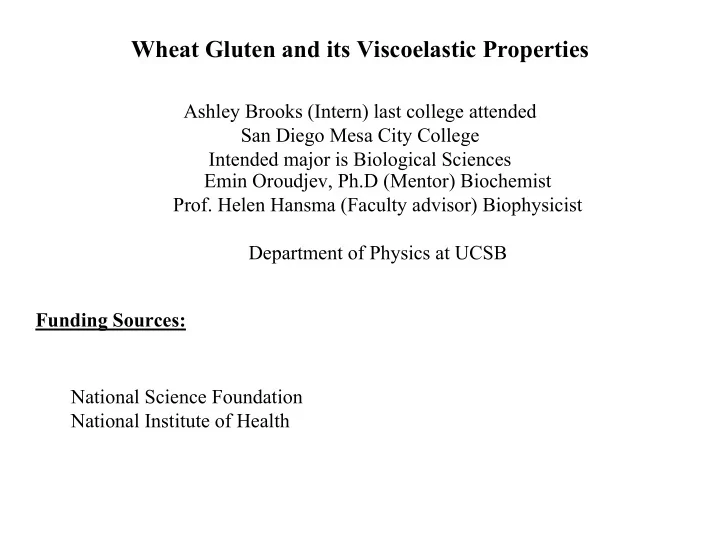

Wheat Gluten and its Viscoelastic Properties Ashley Brooks (Intern) last college attended San Diego Mesa City College Intended major is Biological Sciences Emin Oroudjev, Ph.D (Mentor) Biochemist Prof. Helen Hansma (Faculty advisor) Biophysicist Department of Physics at UCSB Funding Sources: National Science Foundation National Institute of Health
Wheat Gluten and its Viscoelastic Properties • Improving bread quality • Inventing new ways to make adhesives, pants, cosmetics, and detergents • Interested in making thermoplastic (disposables) In the even larger picture there are: • Production of bullet proof armor, tethers and pants
Making Wheat Gluten Sample • Ethanol is used to remove Gliadins that are not in the network • Propanol is used to remove Glutenins that are not in the network • Propanol and Mercaptoethanol are used to break up the network
Molecular Force Probe • Laser allows for detection of cantilevers amount of bending • Detector is used to determine deflection of cantilever • Piezo crystals are used to control the actual movement of the stage laser detector - Cantilever with probe tip Molecular Force Probe cantilever
Data Collected -1 0 nN 1 2 6.0 5.8 5.6 5.4 5.2 µm
Research Objectives • What component(s) in the wheat gluten structure is responsible for viscoelasticity • The effect PH solutions have on wheat gluten viscoelasticity • Comparison of curve models based on data and graphs collected E pN nm Worm-like chain model Exponential model Hooke model
Analysis of Data -1.2 -1.0 nN -0.8 -0.6 5.9 5.8 5.7 5.6 5.5 5.4 5.3 µm E
Recommend
More recommend